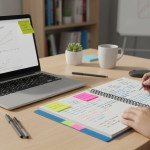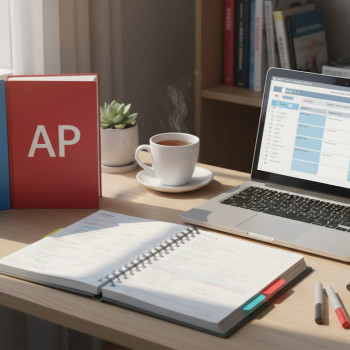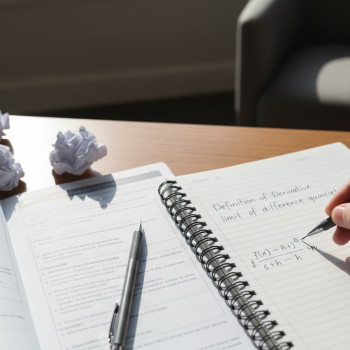Intro: Calm Before the Exam—Know What You Can Bring
Walking into an AP exam can feel like the moment before a curtain rises: nerves, last-minute jitters, and a small wish for a cheat sheet taped under your desk. But the real power is not in breaking rules—it’s in knowing the rules so you can work within them calmly and confidently. This post breaks down, in plain language, what reference items and tools the College Board allows on AP exam day: rulers, formula sheets, calculators, and official reference guides. You’ll get concrete examples, a handy table to summarize policies, and practical tips to make these tools work for you—not against you.

Why the Rules Exist (and Why That’s a Good Thing)
First, a quick reality check: the College Board designs these rules to keep the testing experience fair, secure, and focused on what each AP course aims to assess. Some exams measure problem-solving under time pressure and access to certain tools that reflect real-world practice (for example, graphing calculators in Calculus). Others assess your ability to reason without external aids. Understanding which aids are permitted helps you plan practice sessions that mirror the real exam.
Key themes behind permitted items
- Fairness: everyone taking the same exam should have the same opportunity and constraints.
- Authenticity: some exams simulate tools used in that discipline (e.g., calculators in physics or calculus).
- Security: limiting what students can bring reduces the risk of cheating and exam compromise.
Rulers and Straightedges: When They’re Welcome
Short answer: rulers or straightedges are explicitly allowed only for AP Physics exams. If you’re taking AP Physics 1, Physics 2, or Physics C (Mechanics or Electricity and Magnetism), you may bring a ruler or straightedge to help with diagrams, scale drawing, and measurements on the free-response sections.
Important practical notes:
- Bring a simple ruler—transparent or wooden—nothing electronic or with embedded notes.
- Protractors are not universally permitted unless the exam instructions list them; double-check your specific physics exam rules.
- Rulers cannot have written reminders, formulas, or annotations—those would be treated like notes and could violate security rules.
How to practice with a ruler
When you study, practice drawing force diagrams, electric field maps, or motion graphs and use the same ruler you’ll bring. Building the motor skills to draw clean diagrams quickly can shave precious minutes during the exam.
Calculators: Which Exams, Which Types, and What to Know
Calculators are one of the most nuanced allowances. Whether you can use one—and which kind—depends on the course.
General calculator guidance
- Many math, science, and some economics AP exams allow or require calculators on certain sections. Bring one you know well.
- The College Board permits specific approved handheld graphing calculators and, for many digital exams, built-in Desmos calculators inside the testing application.
- Some calculators are explicitly forbidden: devices with QWERTY keyboards, internet access, cameras, or audio/video features are not allowed.
- You may bring up to two approved handheld calculators to the exam—don’t rely on sharing with classmates.
Practical checklist for calculators
- Confirm whether your exam has a calculator-allowed section and what type is required (graphing vs scientific vs 4-function).
- Check that your handheld model is an approved model if you plan to use one—some touchscreen or stylus-based models are disallowed.
- Bring spare batteries or a charger if your model allows it and if permitted; otherwise, use a reliable battery level on test day.
- Practice under timed conditions using the same calculator so you don’t waste time fumbling through menus or functions on exam day.
Printed Reference Sheets and Formula Pages
This is perhaps the most common confusion among AP students: can I bring a formula sheet? The short answer is: usually no—except for specific official reference materials that the College Board provides for particular exams.
Official printed reference information
For certain exams (notably some AP Physics courses and a few specialized subjects), the College Board distributes official reference pages or equation sheets at the exam. These are the only printed reference materials you are allowed to use during the exam. Students may write on those pages while testing, but the proctor collects them before you leave and they must remain in the exam room. You cannot bring your own formula sheets, textbook pages, or printed cheat-sheets into the room.
What this means for you:
- Do not prepare personal formula sheets to bring on exam day. Instead, use your own condensed sheets while studying—but leave them at home on the test day.
- Be familiar with what the official reference sheet includes. For physics exams it often contains constants, equations, and unit conventions—so focus your memorization on what’s not on that sheet.
- Practice both with and without those official sheets (when available) so you know whether a formula is worth memorizing.
What the Table Says: Quick Reference for Common AP Items
| Item | Allowed (Generally) | Notes |
|---|---|---|
| Ruler / Straightedge | Allowed for AP Physics exams | No markings or notes; bring simple physical ruler |
| Calculator (handheld) | Allowed for specific exams/sections | Only approved models; up to 2 handhelds; practice with your model |
| Built-in Calculator (Desmos) | Available for many digital exams | Type of Desmos (graphing/scientific/basic) varies by exam |
| Printed Reference Sheets | Only official College Board sheets (when provided) | Proctors distribute and collect; students may write on them during test |
| Personal Notes / Cheat Sheets | Not allowed | Bringing them risks score cancellation |
| Electronic Devices (phones, smartwatches) | Prohibited | Even muted phones are not allowed in testing rooms |
Digital AP Exams: New Dynamics, Same Principles
More AP exams have digital components now, and that changes some logistics but not the core rules. For many digital exams, the testing platform includes built-in calculators (like Desmos) tailored to each subject. Even though calculators are built into the platform, handheld calculators may still be allowed for some exams—check your specific course guidance.
Two things to remember:
- Practice on the same digital interface if possible. Familiarity with the on-screen calculator, equation editors, and navigation reduces friction on test day.
- Bring the physical items the rules permit (e.g., allowed handheld calculators for certain exams) and leave disallowed electronics at home.
Study Strategies That Respect the Rules and Boost Performance
Knowing what’s allowed is one thing; using that knowledge to structure your study is where the score improvements happen. Here are proven study habits tailored to the permitted aids.
Practice like it’s exam day
- Timed practice: Simulate the timing and the allowed tools for the sections (with or without calculator, with the ruler for physics practice, etc.).
- Use the same calculator: If you’ll rely on a handheld calculator on the test, use it for all timed practices so your speed and menu memory improve.
- Familiarize with official reference materials: When an official reference sheet is used in the course exam, study with that sheet in front of you so you know what’s on it and what you still must memorize.
Turn your forbidden cheat-sheet into training fuel
Condensed formula sheets you make for studying are invaluable—just don’t bring them into the exam. Use them in the months leading up to the test to decide what must be memorized and what you can comfortably leave off your mental checklist. Then, do several practice tests without the sheets so the highest-priority formulas live in your head.
Get targeted help when you’re stuck
If you repeatedly fumble with a type of calculator function or you can’t translate physics equations into quick steps for a free-response question, consider targeted coaching. Personalized tutoring—like Sparkl’s 1-on-1 guidance—can help you create tailored study plans and simulated practice that mirror the exact tools and constraints you’ll face on test day. Expert tutors and AI-driven insights can pinpoint small habits to change that produce big score gains.
Common Pitfalls and How to Avoid Them
- Assuming a tool is allowed because you use it in class—always check official exam rules for that year and subject.
- Bringing a calculator that’s on the borderline of allowed technology (e.g., touchscreen models)—if in doubt, choose a widely accepted, traditional model or use the built-in Desmos when available.
- Writing formulae on permitted items—any tool with notes or formulas written on it can be treated as an unauthorized aid.
- Not practicing enough without aids for exams or sections that require no calculator—memorization and mental math endurance matter more than you think.
What to Pack for Exam Day: A Practical Checklist
- Approved calculator(s) and spare batteries (if using handhelds and allowed).
- Two sharpened No. 2 pencils with erasers (or pens if the exam specifies ink) and a pencil sharpener.
- Ruler or straightedge only if you’re taking an AP Physics exam.
- Photo ID if required, and your admission ticket or required information as instructed by your school.
- Comfortable clothing (without subject-related writing), a watch that isn’t a smartwatch, and a calm mindset.
Quick Scenarios: How to Handle Specific Questions
Here are some short, realistic scenarios students often ask about.
Scenario 1: “Can I bring my favorite notebook with formulas?”
No. Personal notebooks and formula sheets are not allowed in the testing room. Instead, convert that notebook into a study tool: condense it to a one-page cheat sheet for review, then practice without it.
Scenario 2: “My calculator has physics constants—can I use it?”
Yes, many calculators include built-in constants or conversion tables and are allowed. However, anything you manually enter into the calculator as a note or stored program that could reveal test content would be problematic—avoid storing any potentially exam-related data.
Scenario 3: “The digital test has Desmos—should I rely on it?”
Desmos is handy and allowed where provided, but limit your reliance: practice doing quick estimations by hand too. If Desmos isn’t available for your exam (for example, some stats functions may be restricted), you don’t want to be surprised.
After the Exam: What Happens to Reference Materials
If official printed reference sheets are used, proctors collect them at the end of the exam. They’re retained securely for a short period in case of test security reviews and then destroyed. That’s part of why you cannot bring your own printed guides into the room—standardization and security are key.
Final Tips: Small Habits, Big Results
- Make the allowed tools part of your practice routine early—don’t wait until the week before the exam to try a new calculator.
- Create a mental checklist for exam morning: allowed calculator, pencils, permitted ruler (for physics), photo ID. Lay them out the night before.
- When in doubt, ask your AP coordinator or teacher well before the exam day to confirm what’s allowed for your specific section and format (digital vs paper, hybrid situations, etc.).
- If you want individualized prep to mirror exam conditions, consider 1-on-1 tutoring—programs like Sparkl offer tailored study plans and expert tutors who can run realistic simulations and point out small mistakes you can fix for big score improvements.
Closing: Confidence Over Curiosity
Knowing the rules about rulers, calculators, and reference guides turns uncertainty into preparation. The College Board allows specific tools for clear reasons—and when you practice with those exact constraints, your performance improves naturally. Bring the right tools, practice thoughtfully, and treat the test like a stage to showcase what you’ve already learned.
Remember: the best reference sheet you’ll have on exam day is your preparation. Use official reference information when provided, respect the rules, and build muscle memory for working with permitted tools. If you want someone to help you build that practice plan or run real-time simulations, Sparkl’s personalized tutoring and AI-driven insights can be a helpful part of your strategy—especially when you need focused, one-on-one guidance to polish weak points.

Good luck out there—study smart, pack what’s allowed, and walk into your AP exam with the quiet confidence that comes from practicing exactly the way you’ll be tested.




















No Comments
Leave a comment Cancel